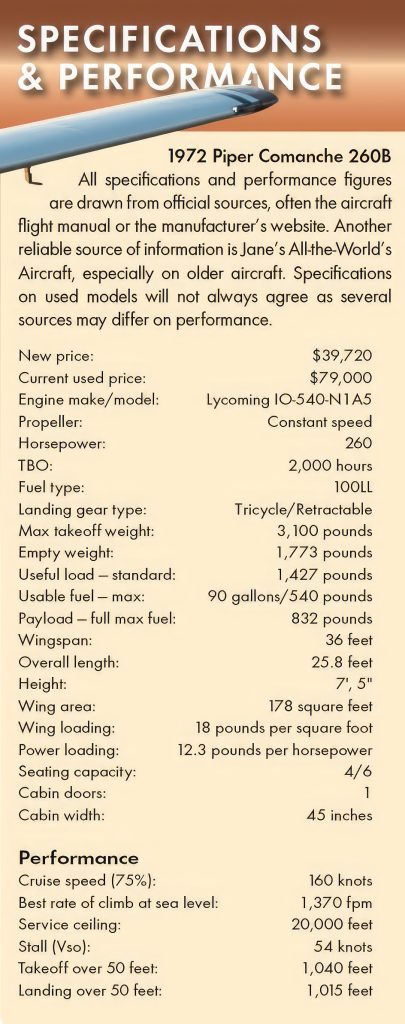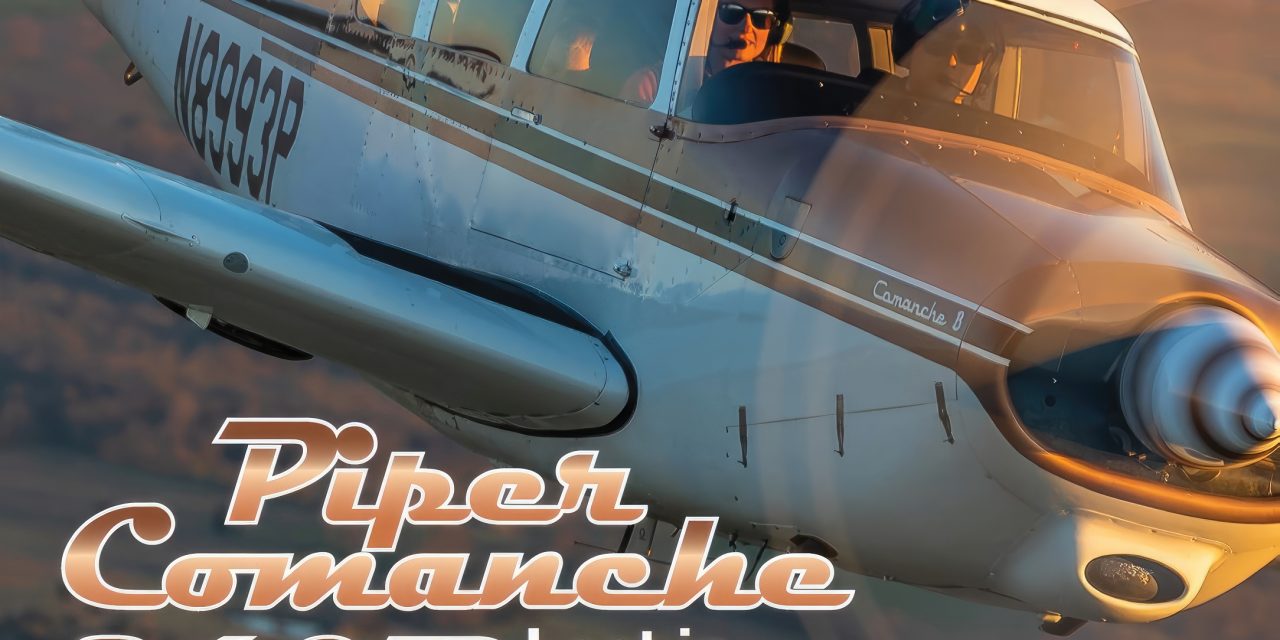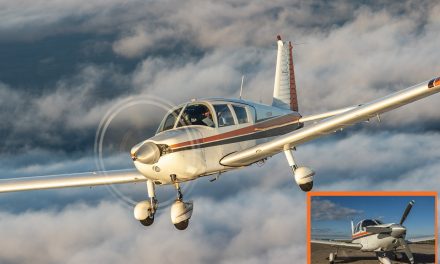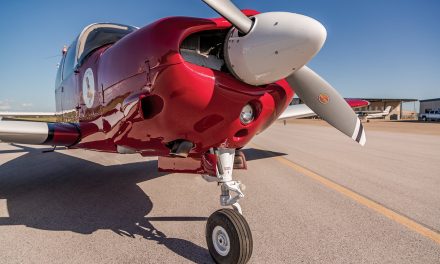Lost in the Flood
While it’s possible to argue that many general aviation airplanes have a variety of applications, the majority are designed for fairly specific missions. The Bellanca Viking is a pure, sensual delight to fly, but the cabin is cramped and its range isn’t the best. The V-tail Bonanza is a fast, responsive machine, but many pilots find its yaw stability unacceptable, especially in rough air, and the integrity of the V-tail has long been in question. Cessna’s 210 Centurion has always been noted for good high-altitude performance with long range, but some aviators dislike the airplane’s heavy elevators.
From the very beginning, it was obvious the Piper Comanche was intended as a cross-country airplane. It is unquestionably one of the most comfortable low-wing retractables in the sky and the 90-gallon fuel option provides the airplane with truly excellent range. In fact, when Piper introduced both the 180- and 250-hp Comanches in 1957, no less an aeronautical authority than Max Conrad selected first a 180 and then a 250 for his long-distance record flights. Even with the factory-provided fuel tanks installed (all of Conrad’s record flights relied on additional fuselage-installed ferry tanks), the 180 Comanche could linger aloft for a kidney-testing 9 hours and the 250-hp version could remain airborne for 7 hours.
When both Beech and Cessna stepped up to 285-hp engines for their high-performance singles in 1965, Piper knew it was time to squeeze a few more ponies into the Comanche. More specifically, though, earlier PA-24s had used carbureted engines, and fuel injection was the wave of the future in those days.
Accordingly, Piper took the changes one at a time. In ’65, the company bumped power up to 260 hp by using a higher compression version of the 250 Comanche’s O-540 Lycoming; it introduced fuel injection the following year by switching to the IO-540D. Besides the power-up, the 260 Comanche was stretched 14 inches in preparation for an eventual six-seat option.
The resulting airplane, dubbed the 260B, was a happy combination of ingredients that did exactly what the company wanted it to do — revitalize sales. During the 6 years between 1966 and 1972, Piper delivered more than 700 260Bs and 260Cs (an updated B). Though sales did slow to a trickle in ’72, the Great Piper Flood in Lockhaven, Pennsylvania, damaged the tooling and sealed the fate of the airplane that had become something of a cult classic in its own time.
Ken Brown didn’t buy his 260 Comanche because of any fanatical desire to own one of the breed, though. The Los Angeles policeman and two partners, V.T. Smiddy and Ray Schoufen, were looking for a cross-country airplane, period. Their minds were open to all candidates, though Ken admits he’d always liked the looks and room of Piper Comanches.
Another factor that swayed the trio toward a Comanche was its uncommon staying power on the used-plane market. Comanches produced in the late 1960s hold their value better than most other retractables in the industry, even the seemingly ageless V-tail Bonanza.
Brown and partners purchased their 260B in early 1980, and they’ve flown it long and far since then. They have a good feel for what a 260B Comanche will and won’t do. “Our primary interest in an airplane was cross-country travel,” Ken said. “Since we bought the Comanche, it’s been to Oshkosh and other points Midwest and East, plus we’ve flown it all over the West Coast. It’s really an excellent cross-country airplane.”
He’s right. I flew Ken’s airplane for about 5 hours in preparation of this report, and it’s apparent the Comanche’s talents are most notable in cruise mode.
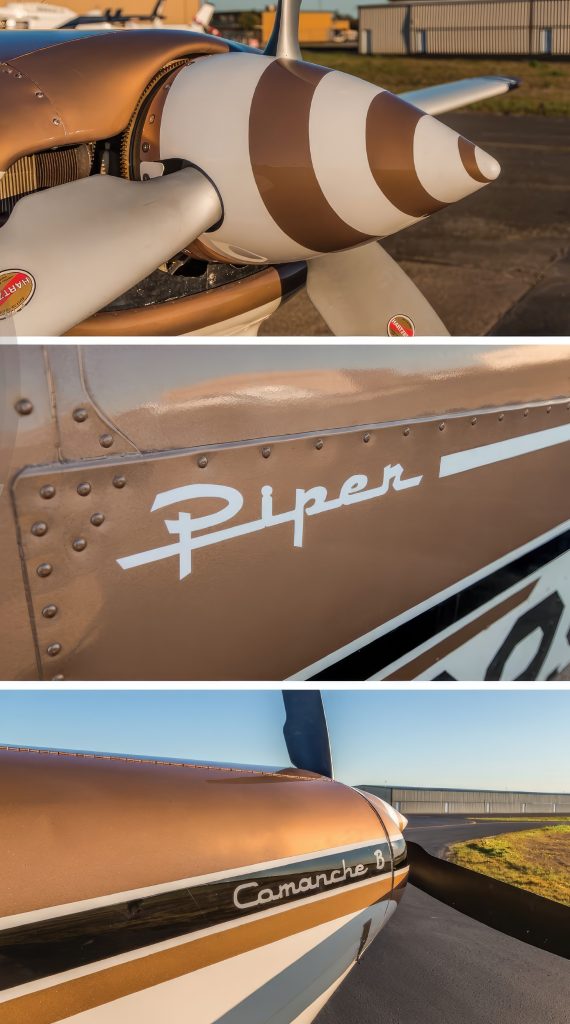
While it’s true that the Comanche isn’t quite as quick as a similar vintage Bonanza or 210, Piper’s competitor does very well on less horsepower. Level at 7,500 feet with all the knobs set for best cruise and two folks aboard, the test airplane proved capable of an easy 160 knots (184 mph). Load another two souls in the back and it’s reasonable to assume that speed would have dropped to more like 157 knots (181 mph), which is the book number.
Better still, during a time of high fuel prices with often limited availability, lower power settings offer an excellent compromise between speed and economy. The 75% cruise performance listed above exacts at about 14 gph, but 65% costs only 11.5 gph in exchange for 153 knots (175 mph). Dropping power to 55% or even 45% increases the number of air miles per gallon.
But there’s more to cross-country qualifications than speed alone. A truly exceptional traveling machine must be comfortable, and the Comanche scores well. A head-on view attests to the cabin’s interior width (45 inches at the elbows) but gives the impression of slightly squashed headroom.
Fortunately, the latter is more illusion than reality. Though Ken and I are both a little under 6 feet tall, there was plenty of room between hair and headliner. The seats are wide and fairly comfortable providing plenty of support in all the right places. Ventilation is adequate, but only marginally so, which is a characteristic typical of airplanes of this vintage.
Even by modern standards, the 260B Comanche’s accommodations rank high. Comfort is easily equal to the best of today’s high-performance singles.
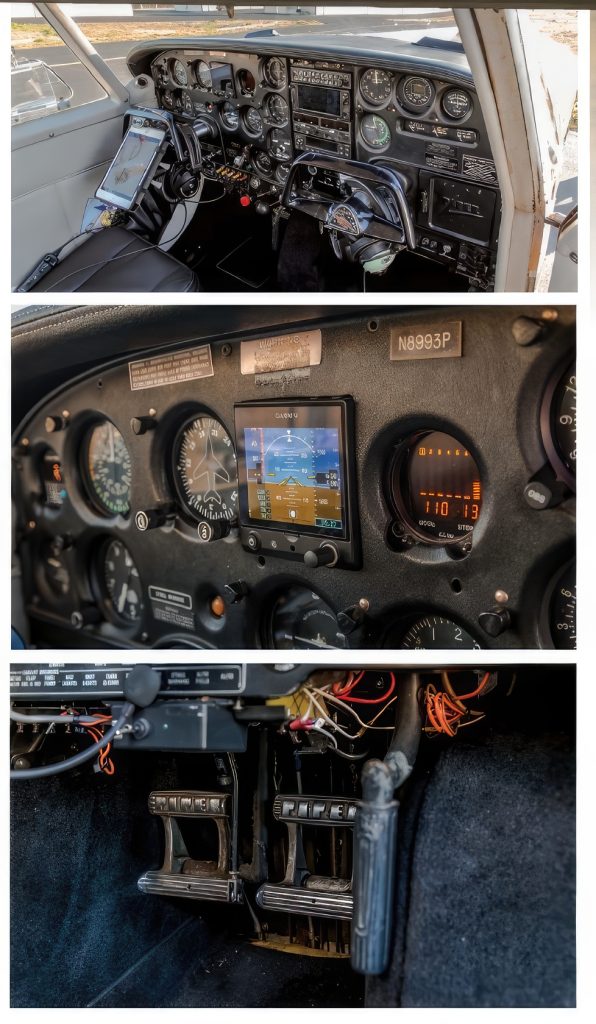
Useful load is often a sore point on older airplanes, and it’s true that if you fill the Comanche’s 90-gallon tanks and the airplane has a typical panel full of options installed, you can’t even think about carrying full seats unless your passengers are jockeys. More specifically, the listed useful is 1,372 pounds.
Subtract 250 pounds from that for radios and the inevitable weight increase of older airplanes, and you’re left with probably 922 pounds for people, baggage, fuel, and stuff. Top the long-range tanks with 100 octane and cabin load is limited to 580 pounds. If your passengers really do average 195 pounds each (and that may be closer to a true general aviation average than the FAA’s 170-pound assumption) you can fly away and still range out almost 1,000 nm. If the stage length is shorter or the load is heavier, cut the range to more like 650 nm. Either way, the Comanche more than keeps up with its competition.
In the real world of cross-country flight, there are probably a few masochists willing to be belted into a seat for up to 6 hours to cover the distances just mentioned. But if the payload will allow, the Comanche’s large fuel tanks provide enough range for several flights without refueling.
If you don’t have to worry too much about range, you should pay some attention to a Comanche’s runway requirements. It’s definitely not a ground lover, but you’re not likely to mistake it for a Maule, either. Stall speed with gear and flaps extended is 54 knots (61 mph), not high enough to demand extended runways, but certainly not conducive to short-field operation. Takeoff and landing ground runs are both listed at less than 1,000 feet, though most pilots would prefer to have at least 2,000 feet of runway for normal operations.
Despite some limitations on short-field operations, Comanches are excellent airplanes in climb mode, either at sea level or at high density altitude. Initial climb is listed at 1,370 fpm at best rate speed, but most Comanche drivers prefer to drop the nose for better engine cooling and improved forward visibility. Climbing at 100 knots from sea level delivers 850-900 fpm, a far better compromise.
If you fly around tall mountains in hot weather or like to visit Aspen or Flagstaff at any time of year, you’ll appreciate the 260B’s large 178-square-foot wing. It provides good lift at all altitudes and gives the airplane strong climb in tall country. I saw 500 fpm at 10,000 feet MSL in Ken’s airplane, significantly better than most of the competition. Aeronautical engineers know the wing as a NACA 64A215, a semi-laminar flow airfoil but by any designation it produces a superior combination of speed and climb.
A fringe benefit of strong climb at high altitude is a tall service ceiling, and Piper claimed the 260’s ceiling as 20,000 feet. I wasn’t able to verify this number because the airplane I flew for this report wasn’t oxygen-equipped, but performance at lower levels certainly hinted at a spectacular service ceiling. Such performance without a turbocharger under the bonnet makes the Comanche a more flexible airplane for over-the-weather operation.
Whatever the cruise altitude or speed, it’s hard to fault the 260B’s handling. Ailerons are fairly effective at all velocities from stall to yellow line, and the elevator has excellent bite at all times. Stability also is good. You can lay a Comanche into a 50-degree bank and it will simply drive around in circles, seemingly forever, without tucking a wing under.
Stalls proved to be fairly straightforward, despite hangar stories to the contrary. If your footwork on the rudder pedals is even halfway coordinated, the airplane will break straight ahead without any tendency to drop a wing. Hanging out gear and flaps produces minimum pitch change, though the Comanche characteristically waddles during gear operation. Gear limit speed is 130 knots and normal cruise indications will rarely exceed 140 knots, so you can throw the wheels to the wind on fairly short notice by merely squeezing off some power and lifting the nose.
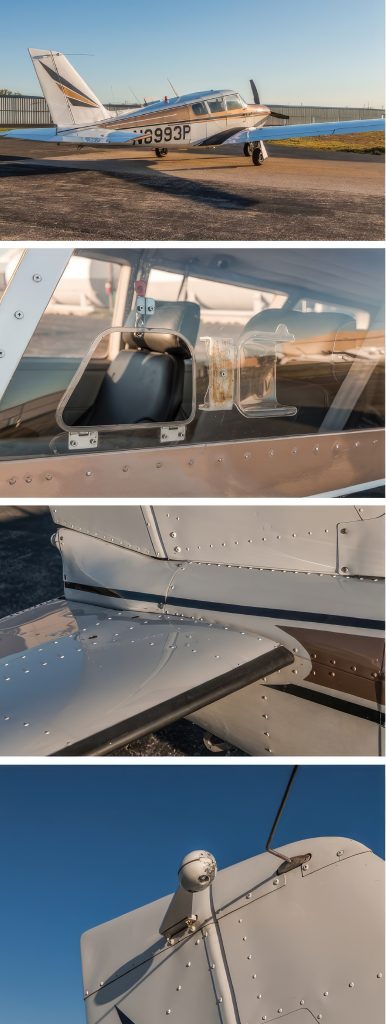
Patterns can be pretty much whatever you wish to make them. If it’s necessary to poke along behind a 152, you can slow a Comanche to 65 knots without violating the 1.3 VSO rule. More normal approaches require 70-75 knots down final with full flaps. Full, in this case, is only about 30 degrees and there’s no prohibition against slips with flaps extended, though such a procedure doesn’t really improve descent rate.
Probably because the Comanche squats close to the ground on its stubbly gear, the airplane has earned a reputation as hard to land. It’s especially difficult to flare the 260B to a touchdown on the mains with the nosewheel high in the air because the nose gear is fairly long. Like many airplanes that mount heavy engines up front, the 260B lands easiest with four souls aboard. The extra two passengers in back help move the CG aft and facilitate the flare.
Still, Ken’s airplane didn’t seem inordinately difficult to land in two-passenger configuration. Using 65 knots across the fence allows a short flare for a quick touchdown.
Like any older airplane, the 260B isn’t without its share of idiosyncrasies. Elevator trim is mounted on the roof, a location that’s uncomfortable for some pilots. The left-to-right layout of throttle, prop, and mixture controls that’s accepted as standard on most singles is ignored on the Comanche. The PA-24-260 mounts the throttle in the middle with mixture to the left and prop control to the right. Visibility forward from the left front seat isn’t the best because of the high panel, the low seating position, and the windshield frame down the center. The pilot sits almost even with the main spar of the wing, so the view below is restricted as well.
But most things considered, it’s hard to think of another high-performance retractable of similar vintage that offers as much performance for the dollars invested. You can buy a ’66 or ’67 model 260B with typical equipment for about $50,000, and if you’re like Ken and his partners, you may find a jewel that will provide you with fast, comfortable, relatively efficient, cross-country transportation for four.
